In today’s global internet market, searching for a particular figure could prove daunting and often overwhelming especially if information about that particular item is scarce. Online site such as ebay, Aliexpress, and even Amazon are like the vast abyss with thousands of items flooding our senses.This figure we are reviewing today is a gem that I was not really looking for but came up as an amazon suggestion based on my “searches”. This model of Helicorion was a pleasantly surprised opportunity that I wasted no time ordering it.
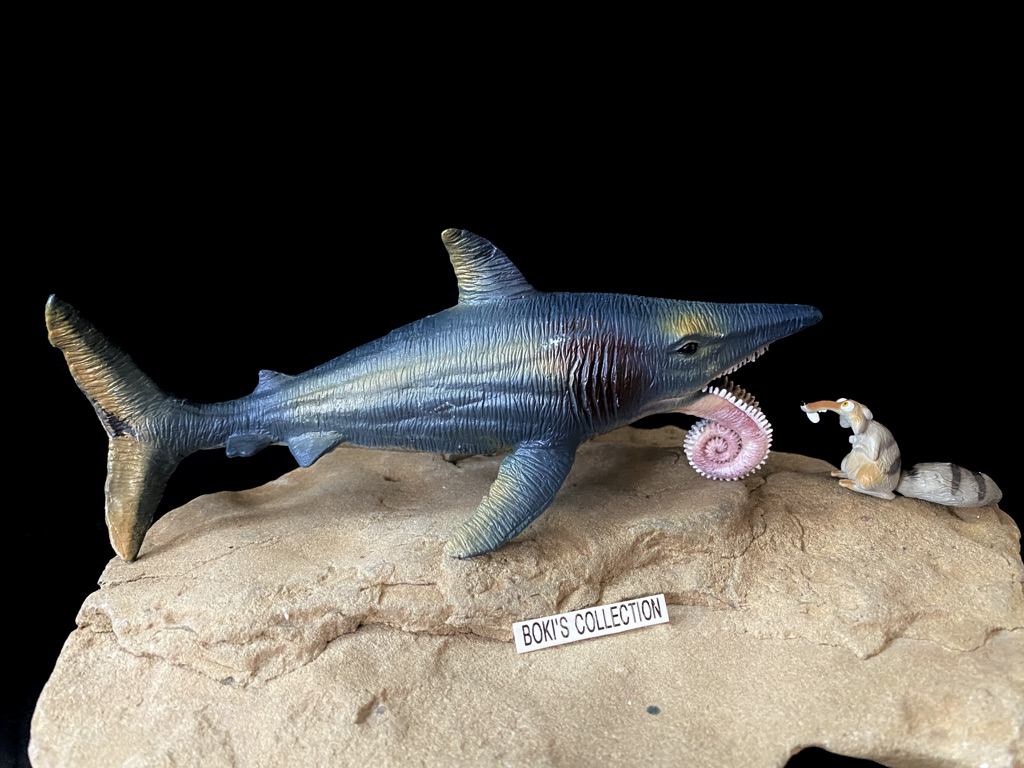
When I first saw the image, I wasn’t so sure exactly if it was a knock off , but after a quick google search, I was confident that it must be an original since I don’t recall ever seeing a model of this size before. I was also relieved that it was made out of solid PVC and not hollow or the squishy bead-filled kind. It is also a good size measuring in at 7.5” inches long from snout tip to tail tip, roughly the same size as PNSO’s model.


There are no markings on the figure, not even a “Made In China” which surely is where its origin is, at all so it must be one of those ubiquitous figures that are produced for the generic cheap market that is flooding the overseas market. Either way, its’s a rough gem that to me at least an exciting find, and lets face it, we really need more models of prehistoric shark and fishes in general. There are so many cool looking ones that really is begging to be made into toy figures!
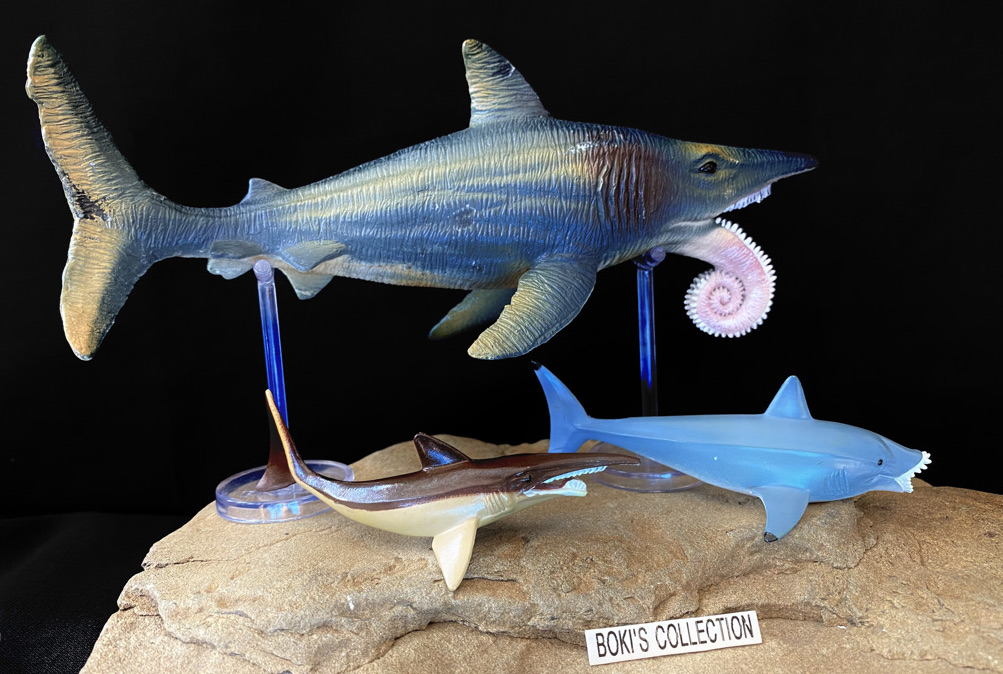
Helicoprion is a eugeneodont fish, like all cartilaginous fishes, are notoriously poor candidate for fossilization due to their skeletons made out of cartilage instead of bones which doesn’t fossilize and rarely make fossil imprints. As a result, most prehistoric sharks and their kin are mostly known from their teeth and in rare occasion and when conditions are right or favorable some imprints or outlines. This has made restoring them a big challenge for scientist.
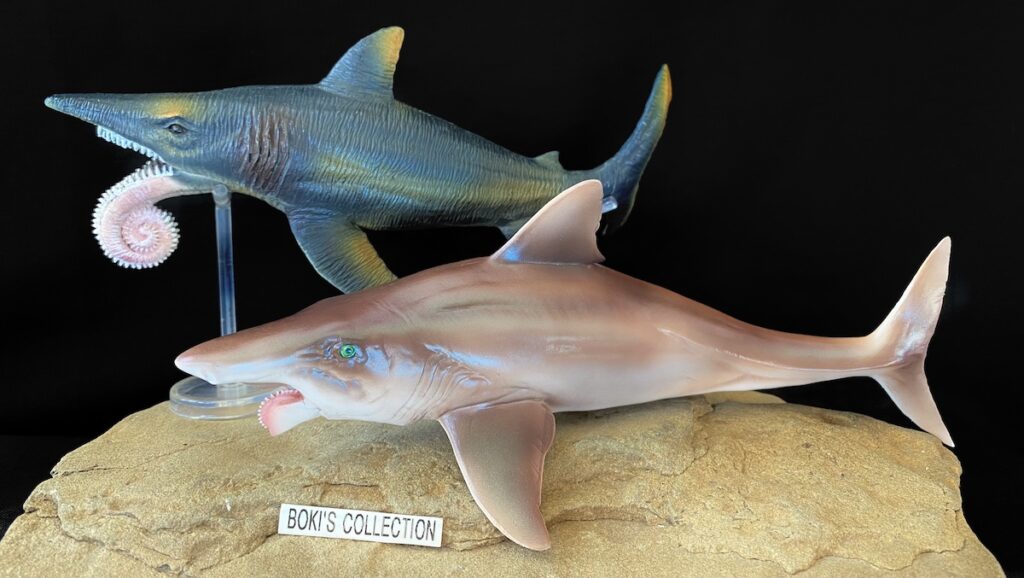
Almost all Helicoprion specimens are only known from “tooth whorls” and it is extremely rare to have more that these teeth preserved. The mystery of how and where these teeth are exactly located in the animal when it was alive eluded those who studies them for decades, and trying to figure it out was like the game of pin the donkey’s tail.These uncertainties have resulted in some truly interesting restoration; in the very early days some had proposed that the teeth whorl was located at the tip of the upper snout and unfolded as a weapon, on the back of the head, then there were some who proposed them being located on the dorsal fin and even at the tip of the tail fin!
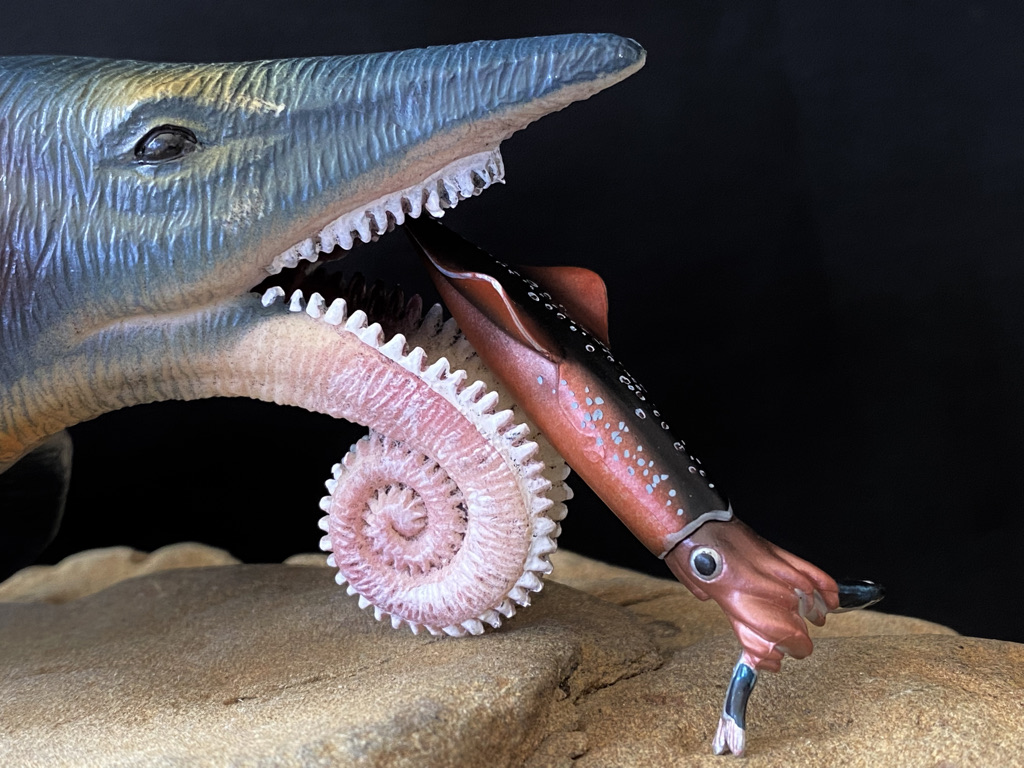
But as outlandish as this early restoration may have been, there is one restoration image that really captured the public’s attention and would be ingrained in pop culture and our collective minds for many decades.This enduring and popular restoration would show Helicoprion as having a shark-like body with the teeth whorls as located on the bottom jaw and juts outwards in a spectacular spiral as it curls inwards.


This is the image that fascinated me and has stuck with me and I’m sure I’m not the only one. Oddly, despite this very unique feature model of Helicoprion rare in the toy model world, this even made more puzzling given that it was one of the largest fish of its time and rival some of the more popular ones.
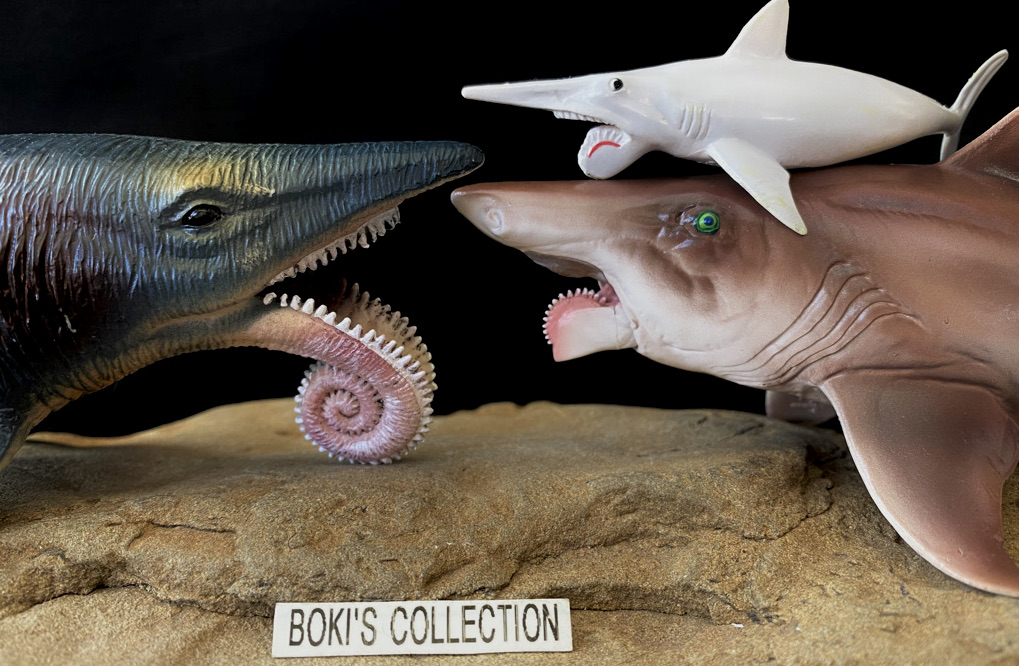
There are a handful of figures that shows this tooth placement, most notably the Yowie figure, but all are small and often hard to find. Despite their popularity, prehistoric sharks are rare in the toy model world except for you know who. There are several figures out there but once again, these are all small and relegated to too set fillers. Perhaps one day companies would shift their attention to some of these fascinating prehistoric fishes.
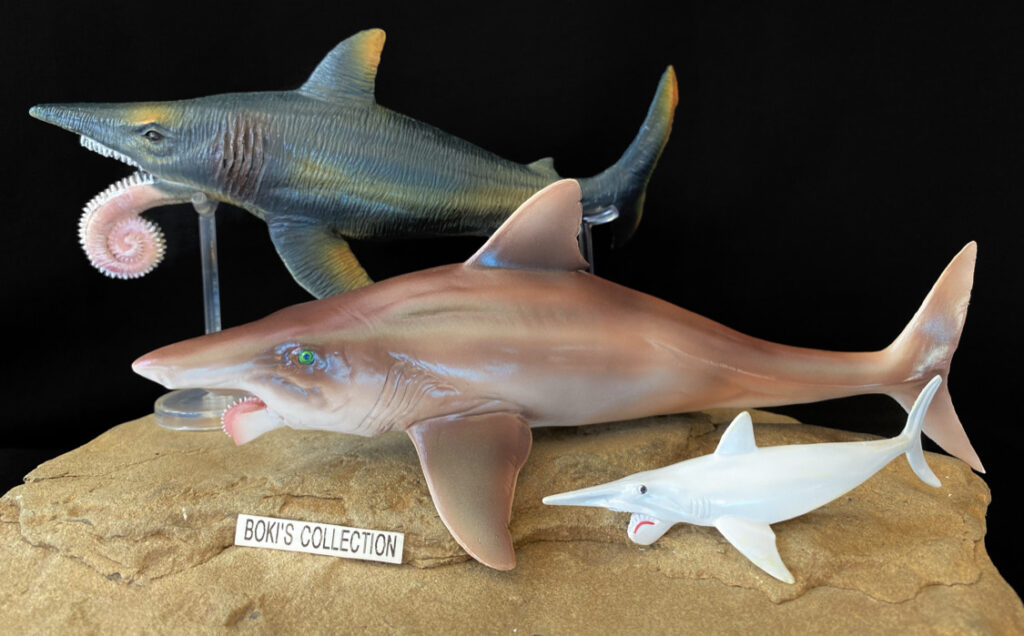
The head is shaped more or less like your typical shark with its pointy snout in a triangular shape. The mouth is open to better showcase the impressive and unique teeth whorls that makes it stand out and unmistakable. On the upper jaw/snout you see the raws of teeth arranged in a normal fashion but is set up further deeper in the mouth leaving a section, the quarter half of the snout just a fleshy protrusion.
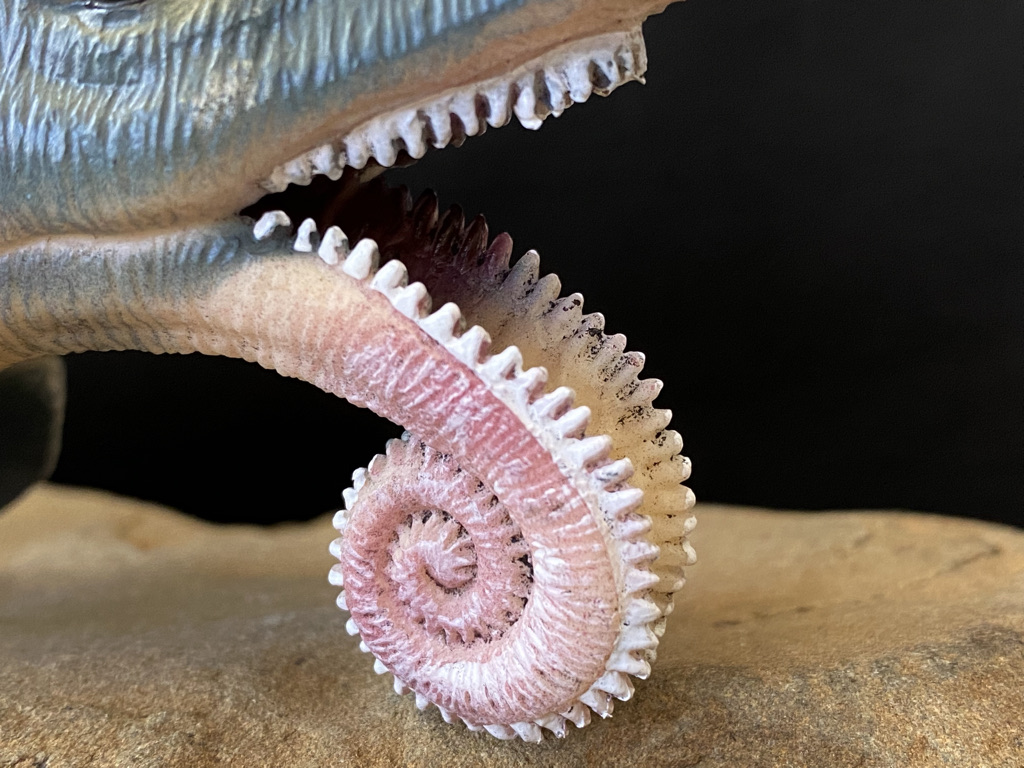
The lower jaw is where the action really starts! Here, you see the rows of teeth arranged on the sides with a gap in-between. The teeth then roll outwards in an impressive fashion. The gap between starts to narrow as the row of teeth starts to follow the narrowing jaw in a spiral fashion. The spiral rows of teeth then becomes tighter as it finally reaches the underside of the jaw where it then coils up like an ammonite shell! If you stitch out this lower jaw spiral, it would protrude forward and twice the length of the upper jaw.
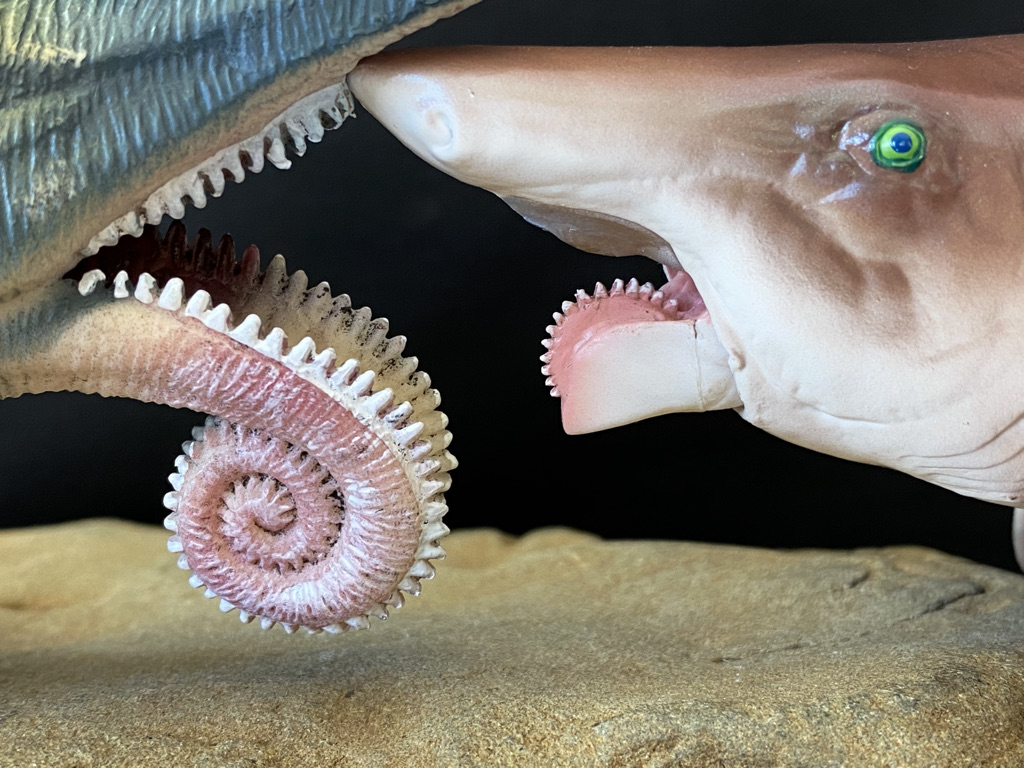
The teeth whorl is nicely sculpted, it almost looks like a young fern frond or a spiral shell. The teeth are individually sculpted and are surprisingly well done, even the white paint is cleanly applied. There is not much details inside the mouth although you can see a bit of ridge-like folds in the lower jaw as well as on the roof of the mouth. The side of the mouth is colored pink and goes all the way to where the head connects with the body before it hits the solid part of the model.
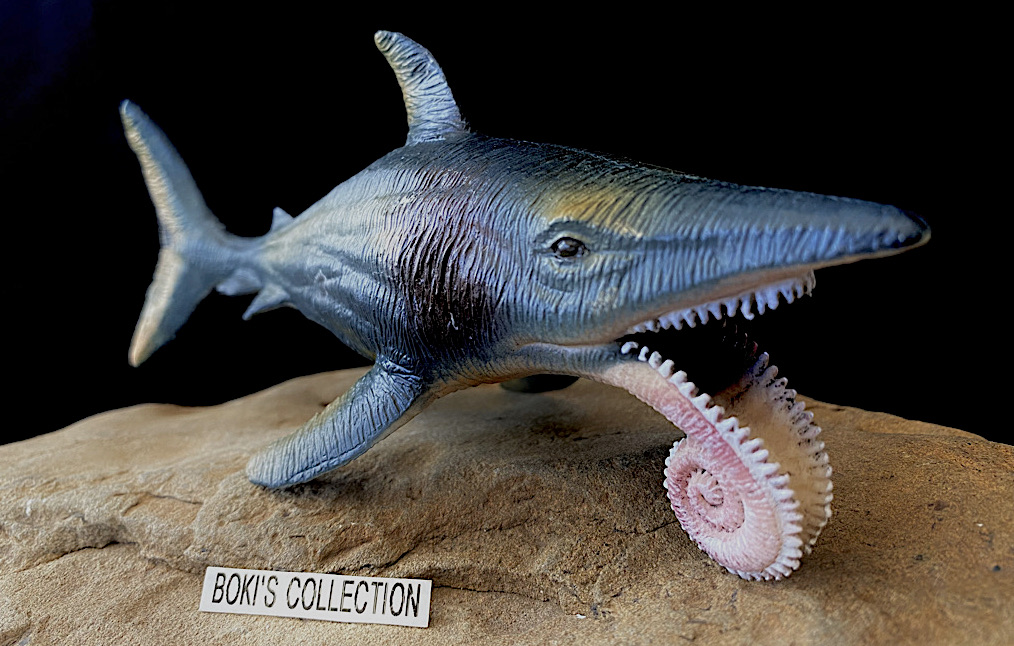
The eyes on the figure is something else, instead of the round shape we see on fish and sharks, the artist gave it an almost human-like shape complete with what looks like eyebrows! It’s also too big in size in proportion to the head, of all the flaws the model has this is the one part of the figures that really bugs me.It just stands out too much and the black color make it eerie looking.
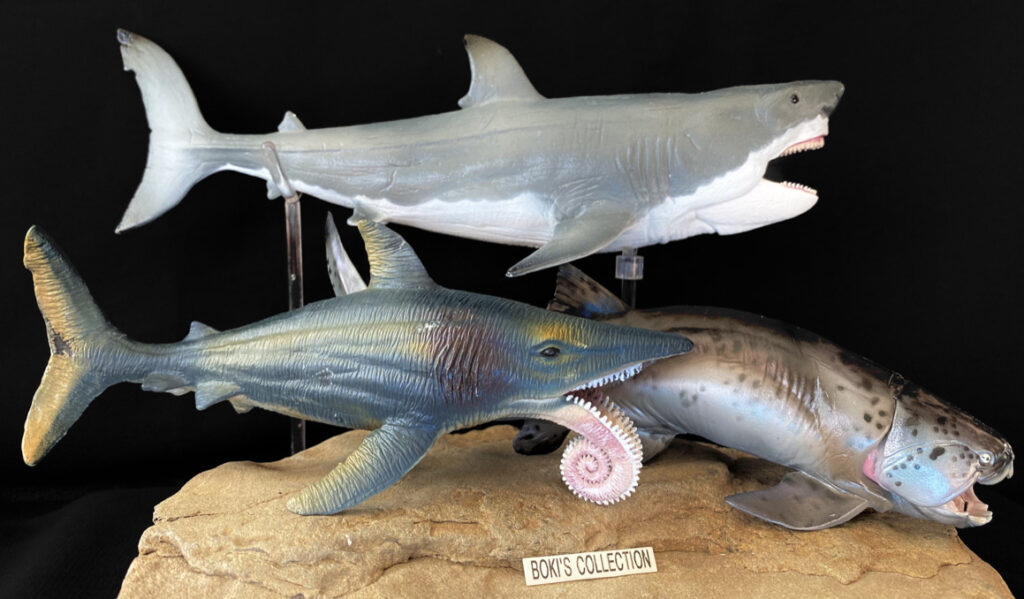
There are five gill slits which is about right. Overall, the head is a bit oversized in comparison to the rest of the body proportions. The rest of the body is typical shark shaped. You see the long first dorsal fin and the second smaller one towards the tail base.The pectoral fins are long and robust especially how the base connects to the body, it looks more like a marine reptile flipper than a shark or fish, but it does have some nice details such as cuts and torn skin that add a little something.The tail follows the shark-like shape with an upper and lower caudal lobes. Then there are the pelvic fins which are sculpted on the sides, and oddly there are two anal fins also situated on the side instead of under the body.

The body is robust with lots and lots and lots of lines. This is the case of over texturing for the sake of having some “details”. This over texturing resulted in a very wrinkly looking fish! There are however muscle definitions on the body but again they look like random bulges on the animals side. If you look under the figure you will see many more skin wrinkles and folds especially between the pectoral fins. In a way, it sort of reminded me of the early PNSO megalodon in how overtly texture it is.

For a cheap and unknown brand model, there are surprising complexity in the colors. The base body color is a bluish gray from head to the tail. You see some countershading on the head and under the tail base area where there is a white wash with yellow mixed in. You see the same yellow used to highlight the tips of all the fins as well as the tail lobes. Some rust red color is applied on the gill slits. Remember the human-like eyes? Well, to make matters worst, they also gave the “eyebrows” some yellow eyeshadows which doesn’t help at all.

Once again, it is the distinctive teeth whorls that shows a lot of care in both sculpting and color application. Here you see a mosaic of white which is then layered with a pinkish purple color that gives it a nice soft tone. If these colors aren’t enough, a small touch of light yellow wash was applied that really tied the colors all together in a very pleasing way.
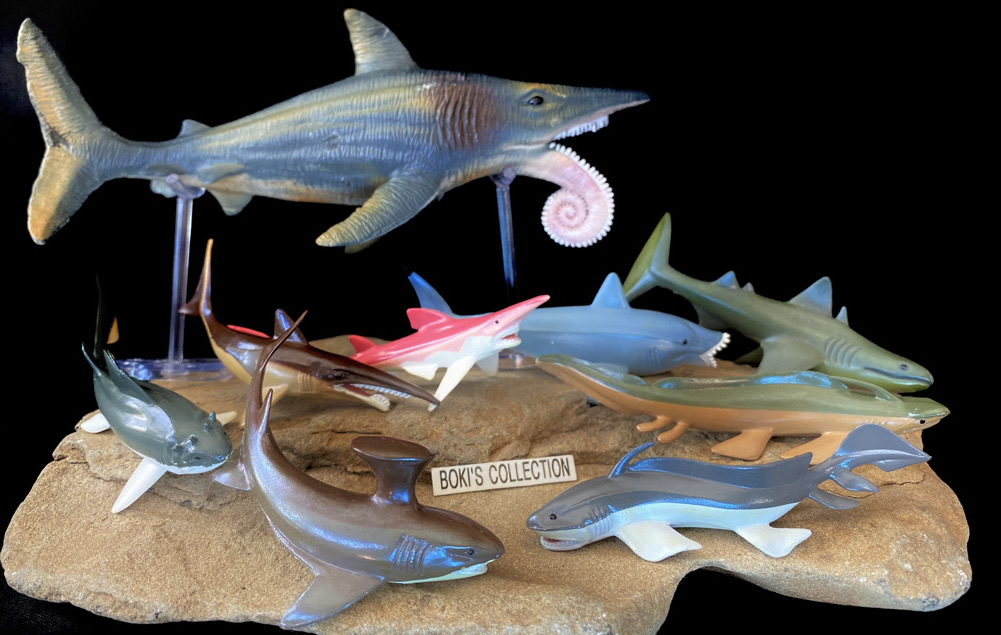
Overall and despite it’s many flaws, I really like this model. It’s a wonderful representation of what was once the consensus of how this unique fish may have looked like. Of all the restoration this enigmatic fish has got through over the years, this is the most iconic and easily the most recognizable. So, despite it being an outdated restoration, it doesn’t lessen its significance when seen within its historic context. It makes a nice contrasting companion to the more contemporary, accurate and beautiful model from PNSO and they do display nice together as a historical reference.
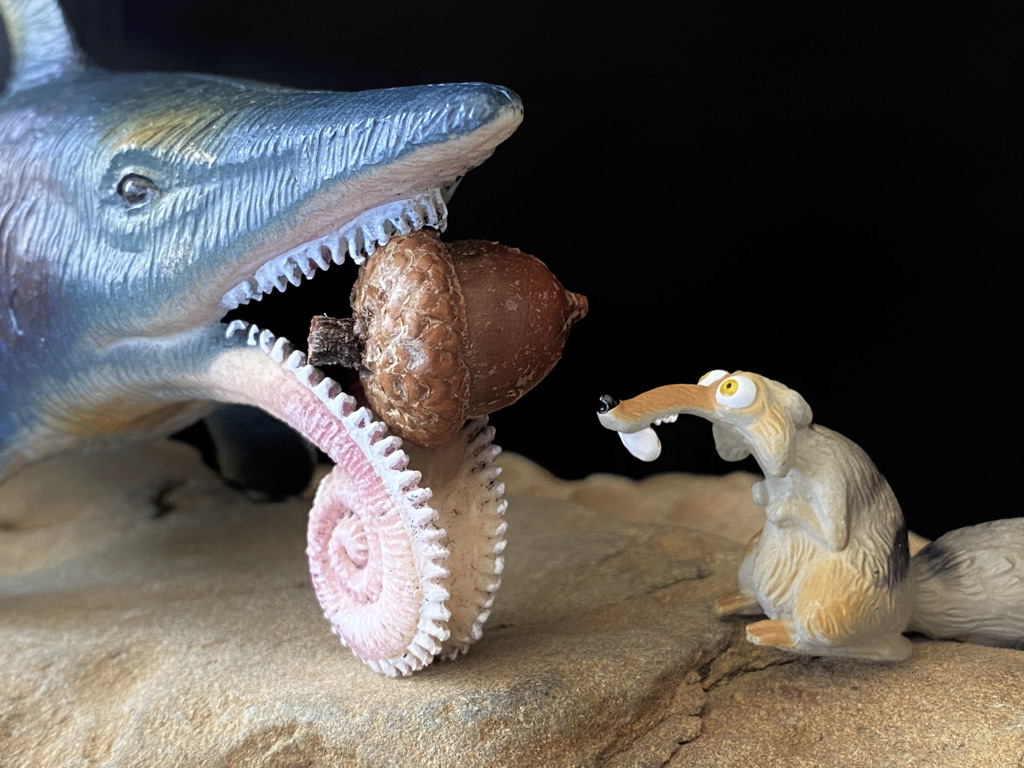
Well, that concludes our review of this interesting model from an unknown brand. Hope you enjoyed it and thanks for reading. Until the next review, stay safe and healthy. Cheers!
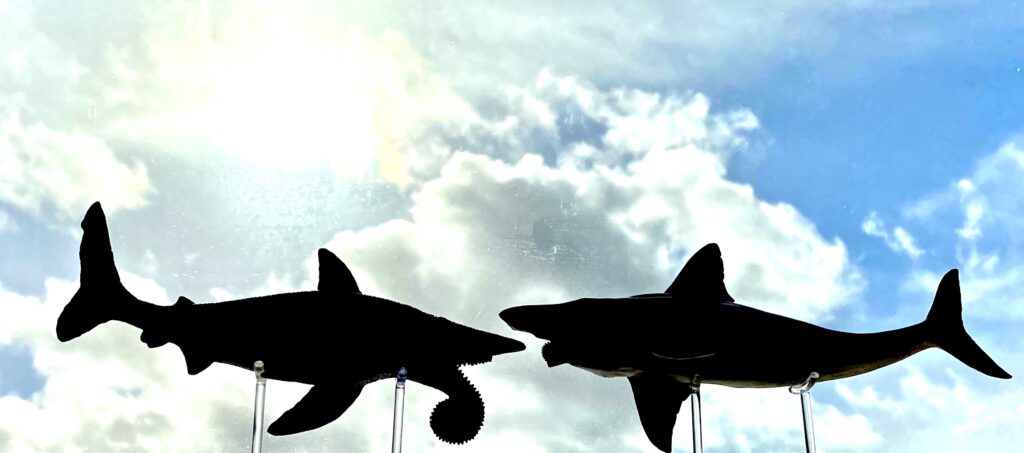
Disclaimer: links to Ebay and Amazon on the DinoToyBlog are affiliate links, so we make a small commission if you use them. Thanks for supporting us!




Honestly, although the material of the helicoprion is somewhat coarse, it has a charm that many finished figures do not have. Other than that it is a very affordable figure. Good review like all you do Boki and above all extensive and with a large number of photographs.
Thanks! The material is pvc rubber that is soft.
Thanks for the very thorough review. I wish we knew more about where models like this (like the equally mysterious Hamipterus and Stygimoloch) came from. Funny you say the jaw looks like a spiral shell–I was just thinking it looks like an ammonite that’s attached itself like a male footballfish.
Thanks. Yeah, it’s a mystery until one of those knockoff companies “attach their name to it” which is pretty much guaranteed these days. I have the pterosaurs on order, hope it arrives safely.
Funny you mentioned ammonite since I almost photographed it’s next to a small fossil I have!
What a curious figure! The aesthetic of the toy reminds me of Imperial or UKRD. I might have to get one of these for myself!
Yeah, you are right about the rubber material being like UKRD. It’s a nice figure that represents one of the most iconic restoration of this animal.
Always liked this restoration. Kind of a shame it didn’t turn out to be correct.
Me too! But at least now we have a good size, fairly decent model of this restoration.